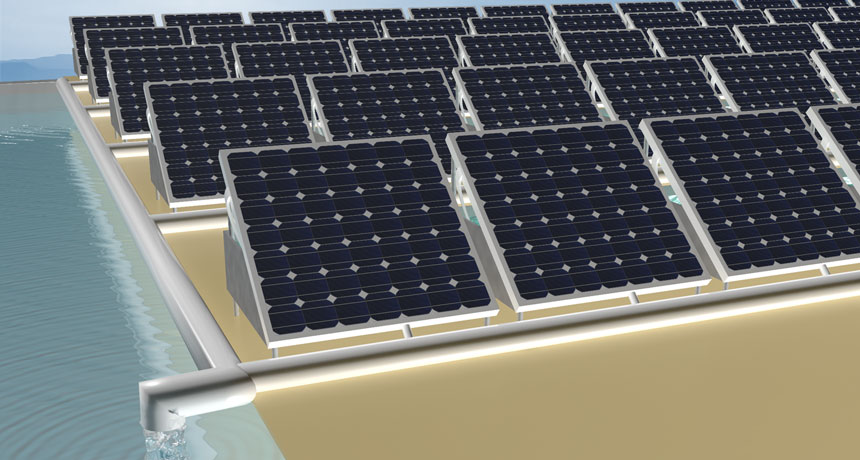condense To become thicker and more dense. This could occur, for instance, when moisture evaporates out of a liquid. Condense can also mean to change from a gas or a vapor into a liquid. This could occur, for instance, when water molecules in the air join together to become droplets of water.
contaminant Pollutant; a chemical, biological or other substance that is unwanted or unnatural in an environment (such as water, soil, air, the body or food). Some contaminants may be harmful in the amounts at which they occur or if they are allowed to build up in the body or environment over time.
electricity A flow of charge, usually from the movement of negatively charged particles, called electrons.
engineer A person who uses science to solve problems. As a verb, to engineer means to design a device, material or process that will solve some problem or unmet need.
filter (in chemistry and environmental science) A device or system that allows some materials to pass through but not others, based on their size or some other feature.
freshwater A noun or adjective that describes bodies of water with very low concentrations of salt. It’s the type of water used for drinking and making up most inland lakes, ponds, rivers and streams, as well as groundwater.
graduate student Someone working toward an advanced degree by taking classes and performing research. This work is done after the student has already graduated from college (usually with a four-year degree).
materials science The study of how the atomic and molecular structure of a material is related to its overall properties. Materials scientists can design new materials or analyze existing ones. Their analyses of a material’s overall properties (such as density, strength and melting point) can help engineers and other researchers select materials that are best suited to a new application.
membrane A barrier which blocks the passage (or flow through) of some materials depending on their size or other features. Membranes are an integral part of filtration systems. Many serve that same function as the outer covering of cells or organs of a body.
online (n.) On the internet. (adj.) A term for what can be found or accessed on the internet.
patent A legal document that gives inventors control over how their inventions — including devices, machines, materials, processes and substances — are made, used and sold for a set period of time. Currently in the United States, this runs 20 years from the date you first file for the patent. The U.S. government only grants patents to inventions shown to be unique.
plastic Any of a series of materials that are easily deformable; or synthetic materials that have been made from polymers (long strings of some building-block molecule) that tend to be lightweight, inexpensive and resistant to degradation.
porous The description of a substance that contains tiny holes, called pores , through which a liquid or gas can pass.
prospect (n.) The vista (as in what’s in view) or the future of something (such as whether it’s going to be successful).
prototype A first or early model of some device, system or product that still needs to be perfected.
salt A compound made by combining an acid with a base (in a reaction that also creates water). The ocean contains many different salts — collectively called “sea salt.” Common table salt is a made of sodium and chlorine.
seawater The salty water found in oceans.
solar cell A device that converts solar energy to electricity.
technology The application of scientific knowledge for practical purposes, especially in industry — or the devices, processes and systems that result from those efforts.
toxic Poisonous or able to harm or kill cells, tissues or whole organisms. The measure of risk posed by such a poison is its toxicity.








